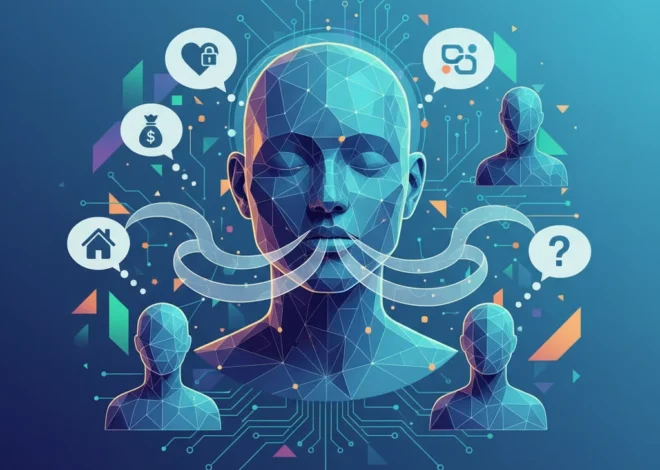
Teen Hackers vs. a City’s Transit: What the TfL Cyber-Attack Really Means for AI, Security, and Your Startup
It sounds like the plot of a modern tech thriller: two teenagers, barely out of high school, accused of launching a cyber-attack against the transportation network of one of the world’s largest cities. But this isn’t fiction. According to a recent BBC report, Thalha Jubair, 19, and Owen Flowers, 18, have pleaded not guilty to charges of conspiring to disrupt Transport for London (TfL). While the case is still unfolding, the headline itself serves as a stark warning sign—a canary in the digital coal mine.
This incident is far more than an isolated story about youthful misadventure. It’s a microcosm of a seismic shift in the world of cybersecurity, a world now dominated by accessible hacking tools, cloud vulnerabilities, and the double-edged sword of artificial intelligence. For developers, entrepreneurs, and tech leaders, ignoring the lessons from this London Underground story would be a critical mistake. The threat isn’t just from state-sponsored actors in hidden bunkers anymore; it could be from anyone, anywhere, with a laptop and an internet connection.
So, let’s unpack what this really means for the future of software, security, and the startups building it.
The Democratization of Disruption: From Script Kiddies to SaaS-Powered Threats
For decades, the term “script kiddie” was used to dismissively describe amateur hackers who used pre-written scripts and tools they didn’t understand to cause chaos. While the intent was malicious, their technical depth was often shallow. Today, that landscape has fundamentally changed. The modern equivalent isn’t just downloading a script; it’s subscribing to a Cybercrime-as-a-Service (CaaS) platform.
These illicit SaaS products, available on the dark web, offer sophisticated capabilities on a subscription basis—from ransomware kits to DDoS attack rentals. This has dramatically lowered the barrier to entry for launching potent attacks. What once required deep knowledge of programming and network protocols can now be accomplished with a few clicks and a cryptocurrency payment. This “automation” of cybercrime means that the motivation, not the skill, has become the primary prerequisite for an attacker.
When we look at a target like TfL, we’re talking about critical national infrastructure. A successful attack doesn’t just steal data; it can grind a city to a halt, causing economic damage and endangering public safety. Attacks on these systems are on the rise globally. The U.S. Cybersecurity and Infrastructure Security Agency (CISA) regularly issues alerts about threats to sectors like energy, water, and transportation. A 2023 report noted a significant increase in cyber incidents affecting critical infrastructure, with ransomware being a primary culprit (source).
High Stakes, High Debt: Is Oracle's AI Bet a Stroke of Genius or a House of Cards?
AI and Machine Learning: The New Arms Race in Cybersecurity
The conversation about modern threats is incomplete without discussing the roles of artificial intelligence and machine learning. They are the ultimate force multipliers, for both attackers and defenders.
How Attackers Are Leveraging AI:
- Automated Vulnerability Scanning: AI algorithms can scan millions of lines of code or vast networks for exploitable weaknesses far faster than any human team. They can identify zero-day vulnerabilities through pattern recognition and predictive analysis.
- Hyper-Realistic Phishing: Generative AI can create highly personalized and convincing phishing emails, text messages, and even voice calls (vishing) that are nearly impossible to distinguish from legitimate communications.
- Adaptive Malware: AI-powered malware can change its own code (polymorphic malware) to evade detection by traditional signature-based antivirus software. It learns from its environment and adapts its attack strategy in real-time.
How Defenders Are Fighting Back with AI:
Fortunately, the cybersecurity industry is a hotbed of innovation, and AI is its most powerful new weapon. Companies and startups in this space are building sophisticated defense mechanisms:
- Behavioral Analysis: Instead of looking for known threats, AI-driven security platforms monitor the normal behavior of a network and its users. When an anomaly occurs—like a user account suddenly trying to access sensitive files at 3 AM from a different continent—the AI flags it instantly.
- Automated Threat Hunting: Automation powered by machine learning can sift through terabytes of log data to identify subtle patterns that indicate a breach in progress, allowing security teams to respond before significant damage is done.
- Predictive Threat Intelligence: By analyzing global threat data, AI can predict emerging attack vectors and recommend proactive security measures, helping organizations patch vulnerabilities before they’re ever exploited.
The Cloud Conundrum: A Double-Edged Sword for Startups and Enterprises
The backbone of modern tech, from the smallest startup to giants like TfL, is the cloud. It offers incredible scalability, flexibility, and power. However, it also introduces a new and complex attack surface. While cloud providers like AWS, Azure, and Google Cloud invest billions in security, the “Shared Responsibility Model” means that the end-user is still responsible for configuring their services securely.
A single misconfigured S3 bucket, an overly permissive IAM role, or an exposed API key in a public code repository can be all an attacker needs. According to a 2023 report by IBM, the average cost of a data breach reached an all-time high of $4.45 million (source). For a startup, such a breach isn’t just a cost; it’s often an extinction-level event.
This is where secure programming and a “security-first” mindset become non-negotiable. Developers can no longer afford to treat security as someone else’s problem or a final-stage checkbox. It must be integrated into every step of the software development lifecycle (SDLC).
The Dawn of a New Cyber War: How AI-Powered Spies are Changing the Game
To better understand the modern threat landscape, it’s helpful to compare traditional attack vectors with their AI-supercharged counterparts.
| Traditional Attack Vector | Modern AI-Powered Equivalent | Primary Defense Strategy |
|---|---|---|
| Generic Phishing Email | AI-Generated Spear Phishing (highly personalized) | Advanced Email Filtering & Continuous User Training |
| Signature-Based Malware | Polymorphic & Adaptive Malware | AI-Based Behavioral Threat Detection (EDR/XDR) |
| Manual Network Scans | Automated, AI-Driven Vulnerability Probing | Proactive Patch Management & Continuous Monitoring |
| Brute-Force Password Attacks | Credential Stuffing using breached password lists | Multi-Factor Authentication (MFA) & Passwordless Solutions |
Actionable Takeaways for the Modern Tech Professional
The TfL incident is a wake-up call. Whether you’re a founder, a developer, or an IT professional, complacency is no longer an option. Here’s how to translate this news into action:
- Embrace a Zero-Trust Architecture: The old “castle-and-moat” model of security is dead. Assume that your network has already been breached. A Zero-Trust model requires strict verification for every person and device trying to access resources, regardless of whether they are inside or outside the network perimeter.
- Invest in Automated Security Tools: Human teams can’t keep up with the speed and scale of modern threats. Invest in AI-powered security solutions for threat detection, cloud security posture management (CSPM), and automated incident response. This is a critical area of innovation for any tech-driven business.
- Make Security a Developer’s Responsibility (DevSecOps): Integrate security testing and code analysis directly into your CI/CD pipeline. Empower your developers with the tools and training they need to write secure code from the start. Secure programming isn’t a specialty; it’s a core competency.
- Prioritize Continuous Education: The threat landscape evolves daily. Foster a culture of learning where your team stays updated on the latest vulnerabilities, attack techniques, and defensive strategies. This includes regular, realistic phishing simulations to train the “human firewall.”
The Ghost in the Machine: How a "Failed" Console Paved the Way for Today's Tech Innovation
Conclusion: The Human Element in a Digital War
The case of Thalha Jubair and Owen Flowers against Transport for London will proceed through the legal system, and the full details may or may not become public. But the bigger story is already clear. We are in an era where the potential for massive digital disruption is in the hands of more people than ever before.
The response cannot be purely technological. While stronger AI defenses, better cloud configurations, and more secure software are essential, they are only part of the solution. The ultimate defense is a combination of technological resilience and human vigilance. It requires building a security-conscious culture, promoting ethical innovation, and recognizing that in our interconnected world, the security of a city’s transit system and the security of a startup’s proprietary code are two sides of the same coin.


